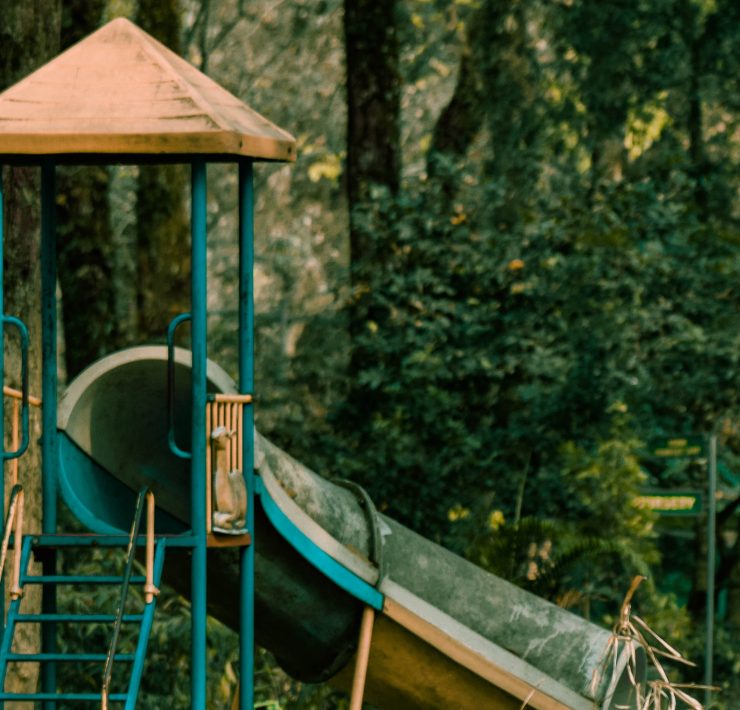One must-do if you ever travel to Japan is signing up for a Japanese tea ceremony in Osaka.
You will end up in a ragtag group of other itinerant tourists eager to immerse themselves into a centuries-old tradition. Like you, they are looking for something to make their trip feel a little more authentic. Or to learn something new that they can casually sprinkle into the conversation to impress dinner guests. Or to just do something touristy to pass time on a Monday afternoon. Whatever you’re looking for, whether frivolous or deep, the tea ceremony delivers.
The tea master will meet you outside an unassuming building which also hosts a vegan cafe whose menu for the day – written in chalk on a board – cannot get further away from Japan; avocado on toast, granola bowls and tofu salads. You will walk through dark-ish corridors and go four floors up in a lift so small you’re practically standing on each other.
The tea master will then usher you into a large room and ask that you take your shoes off at the door. The room, sparse and airy, has some benches on the side where he shall instruct you to leave your bags, and your phones. No cameras allowed. This is private property, he’ll say. Only he can take photos, and for the small price of a glowing review, he will DM them to you later via Instagram. This is not the solemn, spiritual throwback to ancient times you might have expected. If we’re talking IG DMs, we’re firmly in the 21st century. Still, stick with it.
The tea master is young, around 40 or so, dressed in traditional Japanese robes with a thick sash around his waist. He speaks good English. He will lead you into an adjacent room, the actual tea room, where five floor cushions are arranged in a semicircle. One for each of you, and an extra one at the front for him. In my group, there are two couples and then me. He sits us like that – the couples together then me. The correct way to sit is kneeling on the cushion then resting your butt on your heels, with your hands together on your thighs. Go on, try it. See how long you can hold that pose.
If you’re a regular person, five minutes feels like eternity. If you’re the tea master, eternity is eternity. He stays in that position for the duration of the ceremony. He makes some small talk as he tinkers with various-sized bowls at the front, his mask sliding down his face, where he will let it rest just below his nose after he gets tired of pushing it back up. He tells us about his long, expensive journey to becoming a tea master. It takes years, and there are several stages, each with its own certification. He is on the second last tier to receive the ultimate certification.
He starts our “way of tea” class with a condensed history of the Japanese tea ceremony. It was started by a famous monk or other, and includes an epic duel with a samurai. A quick internet search afterwards reveals that versions vary, but the one that he told us involved a humble tea master using the concept of “zen” to triumph over a fierce samurai. This was in ancient Japan, no one knows the precise date. Apparently since then, samurais also train as tea masters.
Once satisfied that the dignified beginnings of his trade have suitably impressed us, the tea master then dives into the actual tea preparation. He first serves us a snack, a soft Japanese sweet in pink (in honour of sakura season) with sweet bean paste in the middle. He says you can’t buy them from the shop, he has them especially made for his guests. It’s a bit too sweet for me and not necessarily something I would seek out again. He demonstrates how to serve it, how to receive it and how to eat it.
The ceremony is in the hand movements, the frequent bowing, the order in which the snack is served and eaten, the rote chants to say thank you and acknowledge your fellow guests. There is even a standard phrase to apologise to the guest next to you for eating your snack before them. And so it goes.
For the tea itself (made from matcha powder), he demonstrates the preparation process then calls us to the front, where we take turns preparing and serving it to each other. It is strictly methodical, there is no guesswork. The server must follow a set process of preparation, including precise measurements of matcha powder and hot water, and a precise way of whisking it together (vigorously, until it foams), and a precise way of handing it to a guest (with the right hand, never left). The guest receives it with both hands, rests the bowl on their left palm, turns it clockwise a couple of times with their right hand, then drinks it in no more than three gulps, making loud appreciative smacking sounds with each swallow.
The smacking might be performative, but it is also genuine. The matcha is delicious, at once earthy and herbal, without the bitterness of coffee. No need for sweeteners. Or maybe that is just the version he served us that afternoon because the matcha powder I brought home with me doesn’t taste that special.
The whole ceremony takes an hour. Then you walk out into the sunshine, feeling strangely edified, like you just attended a sermon whose teachings were specially designed for you. It feels like you have gained a window into an exclusive club which will never really let you become a member, but will allow you to hang in the fringes so you can feel special. Like you’re somehow better than everyone else who has never attended a tea ceremony – zen, and knowledgeable like the original tea master.
In the real world, it’s not a feeling that lasts long.
PS:
The tea master DMed me my pictures the following day (and thanked me for my 5 star review). The shots are quite blurry, and the dim lighting did nothing for the blush-coloured dress I wore that day. Still, I would pay KSh 1,000 again to spend an hour in his class. I might not have retained much about the history of Japanese tea ceremonies but at least I have one good cultural experience to show for my super-indulgent trip. And an appreciation for ceremony for the sake of ceremony. Go on, be extra and make a performance out of some of life’s most ordinary things, like making tea. Why not? Life is made up of the mundane, how we choose to experience it is what makes it special.
Author
-
Jacqueline is an award-winning journalist and communications practitioner with a combined nine years’ experience in local and international newsrooms and the non-profit sector. She is a Chevening scholar and was the 2015 Kenyan winner of the David Astor Journalism Awards Trust. She has previously worked for Nation Media Group as a senior reporter, and has also reported for The Guardian in the UK and City Press in South Africa. She holds an MSc in Practising Sustainable Development from Royal Holloway, University of London. Jacqueline currently lives in Nairobi and works as a communications consultant and freelance journalist. Her favourite subject is people, in all their layers and complexities. She is a feminist and a supporter of social justice. She hopes to one day do a food tour of West Africa. Talk to her about books, cats, or travel.
Jacqueline is an award-winning journalist and communications practitioner with a combined nine years’ experience in local and international newsrooms and the non-profit sector. She is a Chevening scholar and was the 2015 Kenyan winner of the David Astor Journalism Awards Trust. She has previously worked for Nation Media Group as a senior reporter, and has also reported for The Guardian in the UK and City Press in South Africa. She holds an MSc in Practising Sustainable Development from Royal Holloway, University of London. Jacqueline currently lives in Nairobi and works as a communications consultant and freelance journalist. Her favourite subject is people, in all their layers and complexities. She is a feminist and a supporter of social justice. She hopes to one day do a food tour of West Africa. Talk to her about books, cats, or travel.







